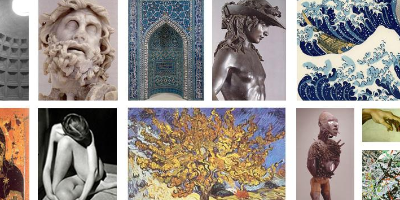French Revolution (jul 14, 1789 – nov 9, 1799)
Description:
The French Revolution was a period of social and political upheaval in France from 1789 to 1799.In 1786, the French economy was suffering; seven wars had been fought and lost recently, and although an eighth was won -- the American Revolution -- it depleted France's riches. Louis XVI tried to repair this by taxing nobles and creating three estates of people with delegates that meet in Versailles. The people of France were unsatisfied with their leaders.
In May of 1789, the Estates General, the legislative body representing the three estates, was summoned for a meeting for the first time since 1614.
In June of 1789, the third estate (the commoners) broke away from the Estates General and became the National Assembly. They met separately until Louis XVI found out and sent troops to stop them. The Assembly was locked out of their meeting area and went to a tennis court instead, where they swore an oath not to disperse until there is a new constitution in France.
In July of 1789, people who supported the National Assembly stormed the Bastille, a prison in Paris. They demanded the release of prisoners and guns, and killed those who opposed them. Meanwhile, people in Paris were going hungry as the nobility lived in luxury in Versailles. Driven by fear of them, Louis XVI dispersed the National Assembly, called off the Estates General, and protected himself.
In July and August of 1789, the great fear began. Random groups of people went into rich people's houses and churches and killed or exiled nobles. They destroyed the feudal records, which stated who owned the land, to gain freedom from their peasantry, effectively d abolishing feudalism and its old rules, taxes and privileges. This burst of chaos is considered the fruit of 900 years of pent up dissatisfaction. Many wealthy people left the country, and the third estate gained control of nearly everything. They were called the bourgeoisie. They became conservative, adopting the attitude that they had all they wanted and that nothing else had to drastically change.
In October of 1789, people were starving in Paris as the royal family and many wealthy members of the National Assembly lived comfortably in Versailles. 60,000 people from Paris, many of them women, marched 11 miles to Versailles with weapons from an armory and stayed for three days. They captured the king and queen and members of the Assembly. The royal family and many legislators marched back to Paris surrounded by 600,000 hungry, angry people. Assembly members were beaten and killed. The need for a constitution was realized.
In July of 1790, churches were confiscated by the state and deemed "temples of reason." Each person in France had to swear an oath to the state.
In June of 1791, Louis XVI left the country very conspicuously, was recognized at the border, and brought back to an unwelcoming Paris. They had decided that a constitutional monarch was no longer realistic.
In April of 1792, Prussia and Austria formed an alliance to defeat France. The National Assembly declared war on Austria, but all of the generals were dead. They lost their first two battles, but won the Battle of Valmy against Austria, who had the biggest army in Europe. It is theorized that France won because their troops were fighting for themselves while Austria's were fighting for a king. However, this victory meant trouble for other countries in Europe.
In August of 1792, Louis XVI and Marie Antoinette were imprisoned as the Tuileries Palace was stormed. The monarchy was effectively overthrown.
In September of 1792, the National Assembly became the National Convention. Among its acts were the abolition of the monarch and the establishment of the republic. A rumor was discovered that the new republic would be overthrown, and all suspects were killed.
In December of 1792, Louis XVI was tried put on trial for treason.
In January of 1793, Louis XVI was found guilty and was executed publicly.
In October of 1793, Marie Antoinette was executed publicly.
From 1793 to 1794, a man named Robespierre formed the Committee for Public Safety and killed all opposed to the revolution. This period is known as the Reign of Terror. Eventually, revolutionaries turned on themselves and Robespierre was overthrown and executed.
In November of 1795, the Directory was formed to replace the Committee of Public Safety. They marginally stabilized France's condition.
The French Revolution ended in 1799 when Napoleon seized control of France.
By 1820, a new king, Louis XVIII was on the throne, leaving people wondering why the French Revolution even happened. However, its liberal ideas reemerged in the 19th century.
Added to timeline:
Date:
jul 14, 1789
nov 9, 1799
~ 10 years
